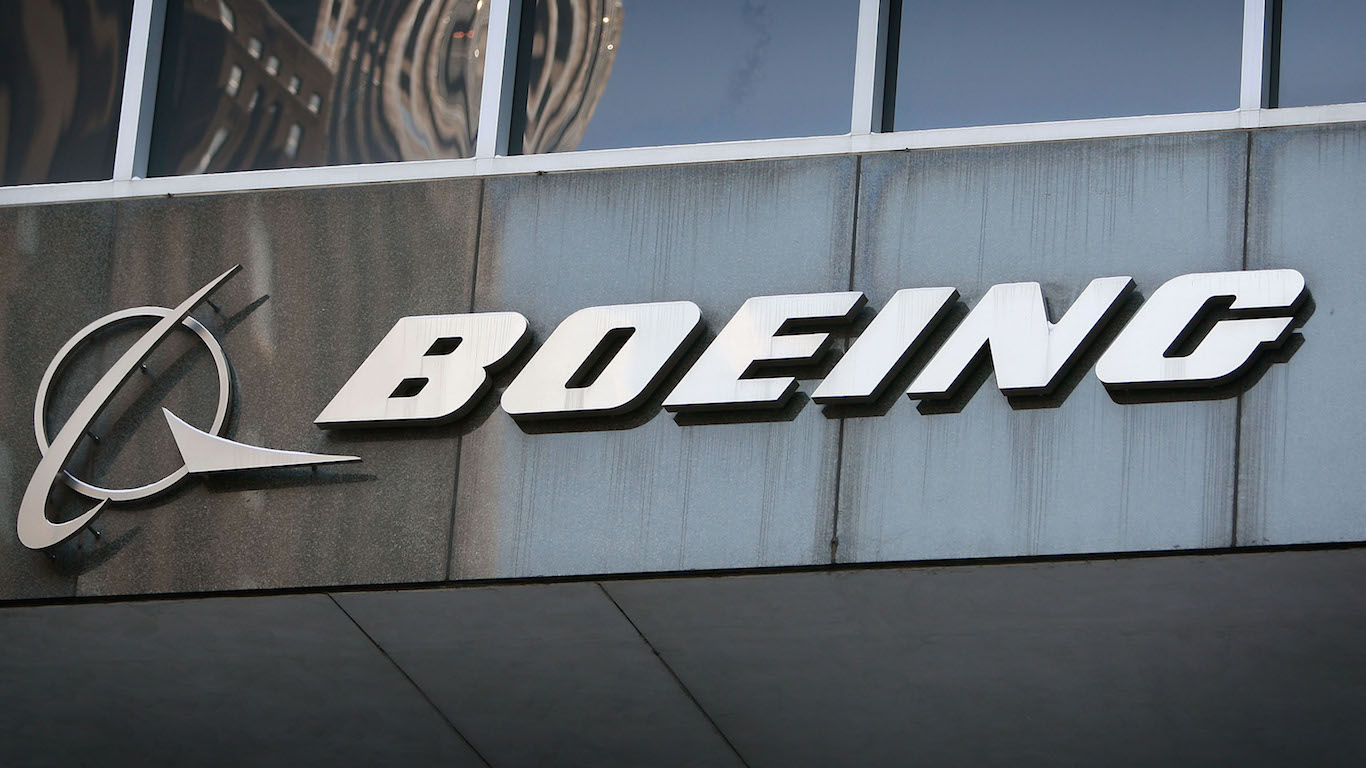
Since selling some $25 billion in senior debt earlier this month, Boeing Co. (NYSE: BA) has remained fairly quiet. So have the company’s shares. Boeing stock closed about $2 a share higher on Tuesday than it did on May 4, when the company announced the size of the debt it was selling.
That’s cold comfort to investors who have seen shares of Boeing tumble by 70% since February of 2019.
Two fatal 737 Max crashes in Indonesia and Ethiopia killed 346 people and led to a global grounding of Boeing’s best-selling plane. The company has not delivered a new 737 Max since March of 2019.
The airline industry arguably has been among the hardest hit by the COVID-19 pandemic. Commercial passenger traffic has dived. According to industry research firm OAG, 213 airlines are currently operating at less than a full schedule. Some 10,000 routes between airports are also still off the board.
OAG also notes, however, that demand for air travel has begun to pick up. Filled passenger seats are now “just” 73% below their level of a year ago. More than 30 million passengers flew last week, compared with 113 million at the same time last year.
For Boeing, demand for new commercial jets depends on demand from travelers. But rising demand alone is unlikely to lift the stock price to pre-grounding levels.
What Does Boeing’s Future Look Like?
Boeing has more than 400 undelivered 737 Max jets parked at several locations around the country. The company has restarted its production line for the aircraft, but as of late April, some 250 orders for the single-aisle plane had been canceled. The order backlog remains above 4,000, but clearing out the undelivered inventory as the production line comes back online will take at least a couple of years.
The 737 Max has steadily fallen behind its competitor A321 single-aisle plane from Airbus. Not only that, a version of the Airbus jet, the A321XLR, likely has put an end to a new plane Boeing was calling the New Midmarket Aircraft (NMA).
The NMA was expected to be a dual-aisle plane with a capacity of between 220 and 270 passengers capable of flying routes of up to 5,000 miles. It would have slotted into Boeing’s product line where the company’s 757 jet fitted in before Boeing ended its production in 2005.
What’s not exactly clear is whether Boeing is continuing to consider building this plane, or whether it plans to come up with a clean-sheet design for a replacement for the 737 Max.
Fallout From the Collapsed Deal With Embraer
The company’s cancellation of a joint venture with Brazil’s Embraer S.A. (NYSE: ERJ) seemingly ended Boeing’s effort to match the new A220 regional jet that rival Airbus acquired from Canada’s Bombardier. Whether the deal fell apart because the companies couldn’t agree on terms (Boeing’s claim) or because Boeing didn’t want to spend the cash (Embraer’s claim) will be settled in court.
That leaves Boeing with no plane to match the A220 in a reasonably immediate timeframe. There is, however, another new airplane that Boeing reportedly is discussing with selected customers. Dubbed the “Future Small Airplane” (FSA), the new plane would seat between 180 and 210 passengers, more than the 737 Max 8’s capacity of 162 seats in a two-class configuration.
According to industry analyst Jon Ostrower, not much is known about the FSA. The company’s long-term strategy, however, has “envisioned replacing the 737 Max 8” with a number of new airplanes both above and below the Max 8’s capacity and range.
How Will Boeing Pay for a New Airplane?
Designing and producing a new airplane would take at least $15 billion, and that’s only if everything runs smoothly. Boeing accounts for new aircraft development costs with program accounting that allows the company to defer those costs until the planes are actually sold. The deferred production costs for the company’s 787 Dreamliner topped $32 billion by the time Boeing began selling the planes.
Including deferred tooling and other costs, Boeing still needs to sell enough 787s to wipe out the remaining $18.7 billion total.
Adding development costs for a new airplane requires cash flow (or access to serious levels of debt). Cash flow is something that Boeing won’t have much of until the 737 Max is back in the air, and that could stretch out until the third or even the fourth quarter of this year. And Boeing isn’t likely to use any of its $25 billion in fresh debt on anything but survival for the next several months.
Boeing benefits from its military aircraft business, and the company has received a contract from the newly constituted U.S. Space Force. Both combined can’t replace the 737 Max business.
Get Ready To Retire (Sponsored)
Start by taking a quick retirement quiz from SmartAsset that will match you with up to 3 financial advisors that serve your area and beyond in 5 minutes, or less.
Each advisor has been vetted by SmartAsset and is held to a fiduciary standard to act in your best interests.
Here’s how it works:
1. Answer SmartAsset advisor match quiz
2. Review your pre-screened matches at your leisure. Check out the advisors’ profiles.
3. Speak with advisors at no cost to you. Have an introductory call on the phone or introduction in person and choose whom to work with in the future
Thank you for reading! Have some feedback for us?
Contact the 24/7 Wall St. editorial team.

